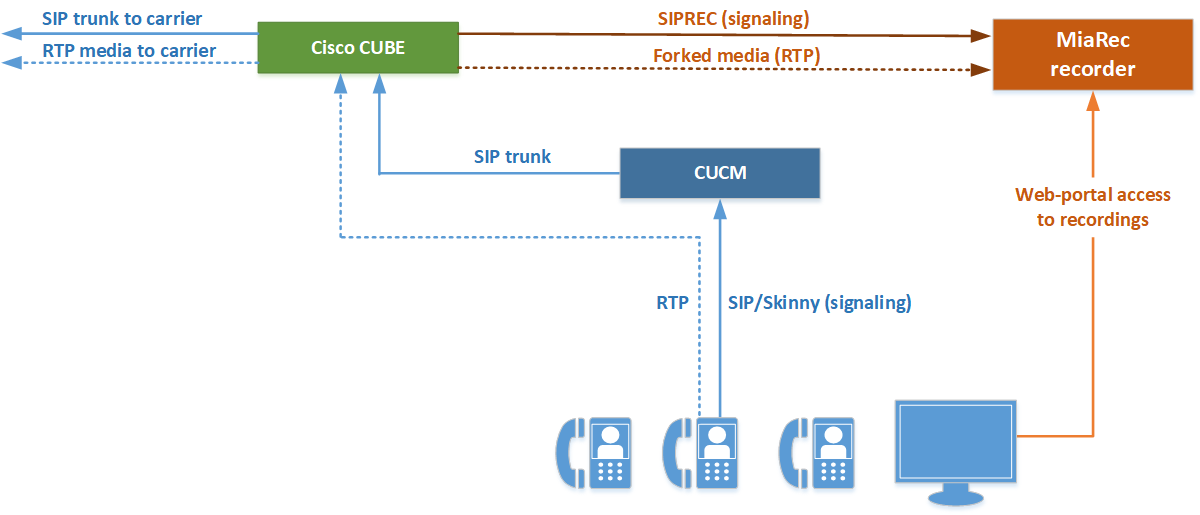Cisco CUBE SIPREC Recording Integration Guide
This guide provides the instructions for configuring call recordings on Cisco CUBE using SIPREC protocol.
How it works
The Session Recording Protocol (SIPREC) is an open SIP-based protocol for call recording. The standard is defined by Internet Engineering Task Force (IETF). Cisco CUBE acts as the Session Recording Client, while MiaRec acts as the Session Recording Server. Recording of a media session is done by sending a copy of a media stream to the recording server. Metadata is the information that is passed by the recording client to the recording server in a SIP session. The recording metadata describes the communication session and its media streams, and also identifies the participants of the call.

Restrictions for Cisco CUBE SIPREC Recording
Cisco CUBE doesn't support SIPREC-based recording for the following calls:
- IPv6-to-IPv6 call recording.
- IPv6-to-IPv4 call recording if the recording server is configured on the IPv6 call legx.
- Calls that do not use Session Initiation Protocol (SIP). Must be a SIP-to-SIP call flow.
- Flow-around calls.
- Session Description Protocol (SDP) pass-through calls.
- Real-time Transport Protocol (RTP) loopback calls.
- High-density transcoder calls.
- Secure Real-time Transport Protocol (SRTP) passthrough calls.
- SRTP-RTP calls with forking for SRTP leg (forking is supported for the RTP leg).
- Multicast music on hold (MOH).
- Recording is not supported if CUBE is running a TCL IVR application.
- Media mixing on forked streams is not supported.
- Digital Signal Processing (DSP) resources are not supported on forked legs.
Restrictions for Video Recording
- If the main call has multiple video streams (m-lines), the video streams other than the first video m-line are not forked.
- Application media streams of the primary call are not forked to the recording server.
- Forking is not supported if the anchor leg or recording server is on IPv6.